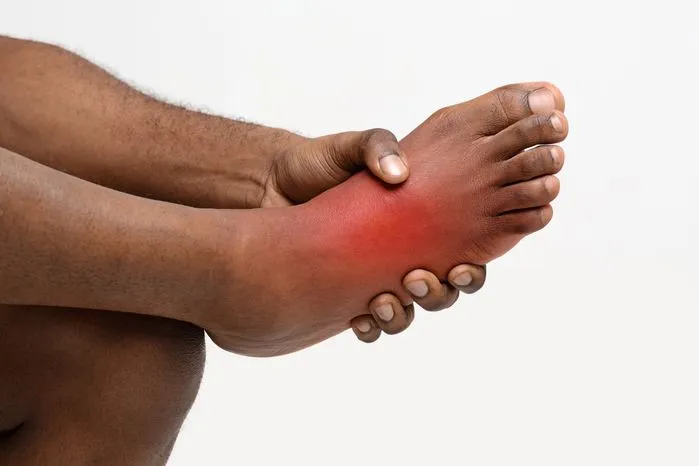
Onychocryptosis, or an ingrown toenail, is a painful foot condition that mostly affects the big toenail. It occurs when the corner of the toenail grows into the flesh rather than over it. The puncturing of the periungual skin by its corresponding nail plate results in the entry of foreign bodies, initiating an inflammatory, infectious and reparative process.
Two in 10 people who seek their healthcare provider’s help for a foot condition have an ingrown toenail. Read on to find out the causes, treatment, and complications of ingrown toenails.
Causes of Ingrown Toenails
There are several reasons for the development of an ingrown toenail. Some of the most common causes of ingrown toenails are:
- Improperly trimmed toenails. Trimming your toenails rounded or too short may cause the nail to grow into the skin.
- Wearing improperly fitting shoes. Improper footwear crowds your toenails, making an ingrown toenail more likely to develop.
- Toe trauma or injury may cause the toenail to grow into the skin.
- Tearing the corner of the toenail.
- Inherent foot shape. Unusually curved toenails or a nail that is comparatively larger than your toe sets the stage for an ingrown toenail. That is also the case if the tissue surrounding the nail border naturally grows around the nail.
Other risk factors for an ingrown toenail include:
- Family history and genetic predisposition of ingrown toenails
- Hyperhidrosis and poor foot hygiene
- Diabetes
- Overweight and obesity
- Cardiac, renal, and thyroid disorders that may put you at risk of lower extremity edema
- Adolescence. At this stage, feet perspire more often, which causes the skin and nails to become soft, leading to easy splitting. In turn, the nail spicules produced can pierce the lateral skin.
- Advanced age. Toenails often thicken with age, making them more challenging to cut. Such nails may also exert pressure on the lateral skin, especially at the edges of the nail plate, and can become ingrown.
Signs and Symptoms of an Ingrown Toenail
Cases of ingrown toenails are classified as mild, moderate, and severe. Mild cases of ingrown toenails are characterized by:
- Nail-fold hardening and swelling
- Erythema
- Edema
- Pain with pressure
When an ingrown nail case develops, it is considered moderate. Some of the signs of moderate cases include:
- Redness, soreness, and infection of the nail fold
- A seropurulent exudate
- Ulceration of the nail fold
Severe cases of ingrown toenails are characterized by:
- Chronic inflammation and granulation
- Nail-fold hypertrophy
Prevention and Treatment of an Ingrown Toenail
You should treat ingrown toenails as soon as you recognize them. If recognized early and before infection sets in, home care treatment may prevent the need for further treatment. Below are practices that can help prevent an ingrown toenail.
Trimming Toenails Straight Across
Whether you trim your toenails or have them done by a pedicurist, ensure that they are trimmed straight across. Trimming your toenails too short or in a rounded or V-shaped manner could predispose the development of ingrown toenails. If you can’t trim your toenails due to a condition that causes poor blood flow to the feet, be sure to visit a podiatrist regularly for nail trimming.
Maintain Moderate Toenail Length
When trimming your toenails, ensure that they are even with the tips of your toes. Too short toenails are more susceptible to the pressure from your shows, which increases the odds of developing an ingrown toenail.
Wear Properly-Fitting Shoes
Tightly-fitting shoes crowd your feet, putting too much pressure on your toes. Also, such footwear can pinch your toes, causing a nail to grow into the surrounding tissue. Nerve damage to your feet could mean that you don’t feel the pressure when wearing tightly-fitting shoes. When shopping, be sure to get properly fitting shoes – those that leave some room for the toes.
Wear Protective Shoes
If your work puts you at risk of suffering toe injury, it is advisable to wear protective footwear, such as steel-toed safety boots.
Check Your Feet
Regularly checking your feet can help you spot signs of an ingrown toenail or other foot conditions, especially if you have diabetes.
Non-Surgical Treatment of Ingrown Toenails
By recognizing an ingrown toe early, various forms of non-surgical treatment can suffice. Some of these include:
- Soaking your foot/feet in warm water 3-4 times every day
- Keeping the foot dry after bathing and for rest of the day by wearing proper footwear
- Taking pain relievers such as acetaminophen or ibuprofen
- Placing a piece of cotton wool between the edge of the nail and the skin, and ensuring that you change it every day
- Applying an antibiotic cream
Surgical Treatment of an Ingrown Toenail
The other possible treatment option for an ingrown toenail is surgery. It could be necessary if there is excessive inflammation, swelling, discharge, and pain at the nail fold. Surgery can help remove a portion of the nail, underlying nail bed, growth center, and part of the surrounding soft tissues.
Surgery also helps eliminate the nail edge, which prevents it from growing into the flesh and encourages forward growth. Permanent removal may also be recommended for children with chronic and recurrent ingrown toenails.
Ingrown Toenail Complications
If undetected or left untreated, an ingrown toenail can result in the infection of the underlying bone. Complications can be particularly severe in patients with diabetes due to the poor blood flow in the feet.
Bottom Line
An ingrown toenail is a common foot condition, especially among young people. The condition can be congenital but is mainly caused by environmental factors. Practices such as wearing properly fitting shoes and trimming toenails correctly can help prevent ingrown toenails. Severe cases of ingrown toenails can be treated through surgery to prevent the infection of the underlying bone.

















